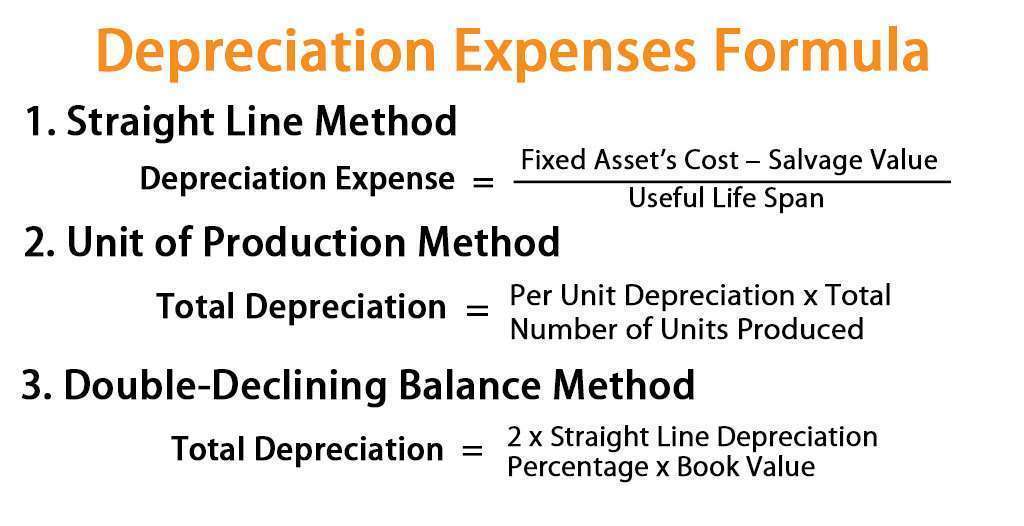Last Updated on August 3, 2022 by

The credit to income summary should equal the total revenue from the income statement. Every company needs to have a clean end and a fresh beginning as the fiscal year ends. To establish this break means closing the books, and to facilitate that closing, CPAs need to record a closing entry for all temporary accounts. Revenue, expenses and dividends all need to move to the balance sheet, leaving behind a zero balance. Recording closing entries is a matter of debiting and crediting temporary accounts, to move balances over to the income summary and then the balance sheet. The Cons – One of the biggest disadvantages of not using Dimensions is that the account setup may not allow for this. Accounts that require Dimensions for posting will have the same requirements in closing entries.
The income statement reflects your net income for the month of December. Accounting Accounting software helps manage payable and receivable accounts, general ledgers, payroll and other accounting activities. The system posts the price differences and exchange rate differences that are assigned to ending inventory to the material stock account. You can see these amounts as well as the closing document in material price analysis.
Table of Contents
The Closing Process Accounting
E.g. a vehicle account is a permanent account since you will enjoy the benefits of a vehicle for the years to come and won’t through it away after the end of the current year. Likewise, you will keep using all the assets in your balance sheet and will be obliged to pay all the liabilities beyond the current year. For these reasons, balance sheet accounts are permanent accounts. Of ₹ 5,00,000 which needs to be credited and then directly debiting the retained earnings account. Since the dividends account is not an income statement account, it is directly moved to the retained earnings account.
- Learn accounting fundamentals and how to read financial statements with CFI’s free online accounting classes.
- Revenue and expense accounts are closed to Income Summary, and Income Summary and Dividends are closed to the permanent account, Retained Earnings.
- All balance sheet accounts are examples of permanent or real accounts.
- It stores all of the closing information for revenues and expenses, resulting in a “summary” of income or loss for the period.
- Remember that all revenue, sales, income, and gain accounts are closed in this entry.
Retained earnings now reflect the appropriate amount of net income that was allocated to it. After crediting your income summary account $5,000 and debiting it $2,500, you are left with $2,500 ($5,000 – $2,500). Because this is a positive number, you will debit Closing Entries your income summary account and credit your retained earnings account. Once all of the required entries have been made, you can run your post-closing trial balance, as well as other reports such as an income statement or statement of retained earnings.
What Accounts Are Involved?
Temporary accounts, also referred to as nominal accounts or income statement accounts, start each accounting period with a balance of zero. These accounts cover categories like revenue and expenses, both of which are numbers found on the income statement. This account is a temporary equity account that does not appear on the trial balance or any of the financial statements. What did we do with net income when preparing the financial statements? We added it to Retained Earnings on the Statement of Retained Earnings. To add something to Retained Earnings, which is an equity account with a normal credit balance, we would credit the account.
- He is the sole author of all the materials on AccountingCoach.com.
- The income summary account will never be found on any financial statement because it’s solely used in the closing process.
- A term often used for closing entries is “reconciling” the company’s accounts.
- In a partnership, a drawing account is maintained for each partner.
- It is now the end of the first quarter, and the company must prepare financial statements for an upcoming bank loan application.
Each of these accounts must be zeroed out so that on the first day of the year, we can start tracking these balances for the new fiscal year. Remember that the periodicity principle states that financial statements should cover a defined period of time, generally one year. Examples include interest account, depreciation account, sales account, rent expense account, salary expense account, etc. The balance in these accounts shows the financial performance of a business for some time which is, the accounting year.
Adjusting Entries
The business has been operating for several years but does not have the resources for accounting software. This means you are preparing all steps in the accounting cycle by hand. Permanent accounts are those that are not bound by a set time frame.

If a corporation has more than one class of stock and uses dividend accounts to record dividend payments to investors, it usually uses a separate dividend account for each class. If this is the case, the corporation’s accounting department makes a compound entry to close each dividend account to the retained earnings account.
Financial Accounting
Hence, there is no sense in an income statement account, such as salary expense account, carrying the balance of previous year’s salary expense incurred. The previous year’s salary relates to the performance of the business in the previous year and not the current year.
Remember from your past studies that dividends are not expenses, such as salaries paid to your employees or staff. Instead, declaring and paying dividends is a method utilized by corporations to return part of the profits generated by the company to the owners of the company—in this case, its shareholders.
Beginning Balances And Closing Entries On An Income Summary
And not having an accurate depiction of change in retained earnings might mislead the investors about the financial position of a company. All the account information that you’ll need for the closing entries can be found on the company’s trial balance. The trial balance is a listing of all the company’s accounts and their balances.
For example, the reversing entry in February of next period makes the expense account negative, but the entry to record it is positive in Feb, making it zero. This is because the actual expense was incurred in January, so the reversing entry eliminated it in Feb. GJ-2 simply means these entries were made on the second page of the general journal and posted to the general ledger above. The following example shows the closing entries based on the adjusted trial balance of Company A. The trial balance, after the closing entries are completed, is now ready for the new year to begin.
Chapter 3: Completion Of The Accounting Cycle
Closing the books is an important step in the preparation of financial statements, such as IRS Form 10-K. The Closing entries will, in effect, reverse the entries in the temporary accounts, but not the permanent accounts.
During the accounting period, you earned $5,000 in revenue and had $2,500 in expenses. Without closing revenue accounts, you wouldn’t be able to compare how much your business earns each period because the amount would build up. And without closing expense accounts, you couldn’t compare your business expenses from period to period. Close income summary to the owner’s capital account or, in corporations, to the retained earnings account.
Close All Expense And Loss Accounts
Without transferring funds, your financial statements will be inaccurate. Note that the income summary account is not absolutely necessary – the revenue and expense accounts could be closed directly to retained earnings. The income summary account offers the benefit of indicating the net balance between revenue and expenses (i.e. net income) during the closing process. The second entry requires expense accounts close to the Income Summary account. To get a zero balance in an expense account, the entry will show a credit to expenses and a debit to Income Summary. Printing Plus has $100 of supplies expense, $75 of depreciation expense–equipment, $5,100 of salaries expense, and $300 of utility expense, each with a debit balance on the adjusted trial balance.
- All expense accounts are then closed to the income summary account by crediting the expense accounts and debiting income summary.
- Year-end is already painful enough and being forced to choose whether to include Dimensions in the closing entry can be a real stressor.
- Printing Plus has $100 of supplies expense, $75 of depreciation expense–equipment, $5,100 of salaries expense, and $300 of utility expense, each with a debit balance on the adjusted trial balance.
- You can see these amounts as well as the closing document in material price analysis.
- For example, the revenues account records the amount of revenues earned during an accounting period—not during the life of the company.
- Because the closing process relies on double-entry accounting, making closing entries means making a series of debits and credits to the appropriate accounts.
Many businesses may opt to only close out those accounts at the end of the year and transfer the balance to the permanent accounts then. Want to learn how ScaleFactor’s automated accounting software can keep your books clean and provide you with accurate financial statements? Temporary accounts are income statement accounts that we use to record transactions and track accounting activity during an accounting period. The balances in these accounts do not roll over to the next year. G, we use the revenues account to record the revenues of the business for an accounting period and not for the whole life of the business. Since no business will want to carry forward the amount in revenue account of FY 2015 to FY 2016.

Making closing entries means creating a zero balance in all temporary accounts by carrying those balances over to permanent accounts. This prepares the books for the next accounting period to start. The expense accounts have debit balances so to get rid of their balances we will do the opposite or credit the accounts. Just like in step 1, we will use Income Summary as the offset account but this time we will debit income summary.
Year-end is already painful enough and being forced to choose whether to include Dimensions in the closing entry can be a real stressor. There is a fairly significant choice here, so let’s walk through the pros and cons of each approach.
Our priority at The Blueprint is helping businesses find the best solutions to improve their bottom lines and make owners smarter, happier, and richer. That’s why our editorial opinions and reviews are ours alone and aren’t inspired, endorsed, or sponsored by an advertiser. Editorial content from The Blueprint is separate from The Motley Fool editorial content and is created by a different analyst team. QuickBooks Online is the browser-based version of the popular desktop accounting application. It has extensive reporting functions, multi-user plans and an intuitive interface. Product Reviews Unbiased, expert reviews on the best software and banking products for your business.

Revenue, expense, and dividend accounts affect retained earnings and are closed so they can accumulate new balances in the next period, which is an application of the time period assumption. After all account balances for temporary accounts have been transferred , the income summary account should mirror your net income.
Author: Kevin Roose























